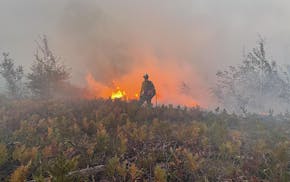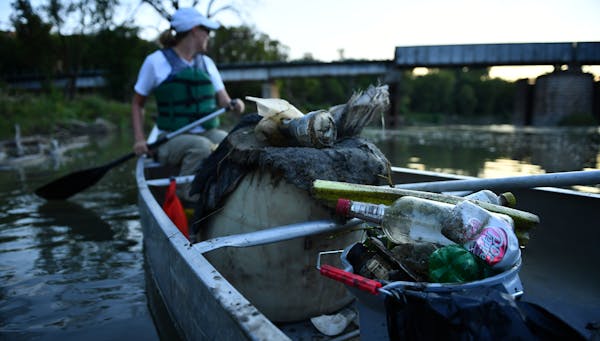The Mississippi near Bemidji is the untainted river of our imagination.
As it travels south of St. Cloud, however, the pollutants start pouring in, and by the time the historic waterway hits Minneapolis, the fish are often under consumption advisories and the water is sometimes unsafe for swimming.
A comprehensive new study finds the majestic river under growing threats from changes in the landscape of central Minnesota and warns that growing levels of nitrates, primarily from fertilizer, threaten its safety for drinking.
The two-year study, released Wednesday by the Minnesota Pollution Control Agency (MPCA), is the first comprehensive look at the health of the upper Mississippi, the entire 510-mile stretch from Lake Itasca to the Twin Cities and its surrounding landscape. As a result of new measurements, 274 more miles of the river will be added the state's "impaired waters" list, bodies of water that fail to meet at least one water quality standard.
Agency officials say they want the data to guide voluntary efforts to protect the river's northern watershed and fix problems with farm chemicals, depleted groundwater and urban runoff in the south.
"We can have great economic development and agricultural uses of land, and we can have great water quality," said Dana Vanderbosch, the MPCA's manager of lake and stream monitoring.
The agency did not release the 186 pages of water quality data it compiled, but posted a six page summary on its website.
Key findings:
• Water quality is "almost pristine near the headwaters" because less of the land has been altered, and many forests and wetlands have survived.
• Streams and rivers joining the Mississippi are the major sources of degradation.
• Where the Crow River joins the Mississippi, south of St. Cloud, nutrient pollution doubles.
• Nitrate levels still meet safe drinking standards, but are rising.
The study examined water quality, fish and aquatic bugs, relying on information from nearly 200 monitoring sites on the river as well as data from such entities as the state Department of Natural Resources. The report encourages protecting existing forests and wetlands, and expanding conservation practices such as planting buffer strips of vegetation near waterways.
"So much of the upper Mississippi is in very good condition," Vanderbosch said. "I think it was a surprise to some of us. It was also very reassuring."
In a three-part series last October, "Danger Downstream," the Star Tribune examined rising threats to the upper Mississippi, using some early data from the MPCA study. The rapid conversion of forests, marshes and grasslands to agriculture and urban development in Minnesota are major factors, according to emerging data and environmental organizations that have studied the river's watershed.
Environmental advocates applauded the new report.
Rich Biske, freshwater conservation director for the Nature Conservancy, said data on the upper Mississippi as a whole, and not just individual watersheds, is very important. He called the dichotomy between the upper and lower portions "a tale of two watersheds."
"I think it's a warning, frankly, but it should be a call to action that we can't let that happen," Biske said. "We need to invest in the Mississippi headwaters."
Protecting existing forests, wetlands and lakes with such tools as conservation easements is less expensive than restoring water once it's polluted, he said.
Others found it harder to cheer. Charlene Brooks, a water resource specialist with the Crow River Organization of Water, a 10-county joint powers board that does watershed planning, said the findings were no surprise.
"We do recognize that there's work to be done," Brooks said. "You always kind of hope you're going to get a different result."
Brooks said farmers and conservationists in her area have made a big push for cover crops, such as rye clover and winter wheat, that are planted late in the season and left in the field over winter to prevent erosion and prevent nitrogen from leaching into the groundwater.
Dennis Fuchs, district administrator of the Stearns County Soil and Water Conservation District in Waite Park, said the study will help his group target and refine conservation practices. They work with farmers, shoreline residents and municipalities, he said.
Fuchs noted that nearly 94 percent of the Stearns County land requiring buffers next to waterways is already in compliance with the state's new buffer law.
In decades past, pollution control often sought to address clear "point sources" such as factories and sewage treatment plants. Now the focus is on indirect sources of pollution — runoff from farms and urban areas that trickles into streams and makes its way into waters such as the Mississippi, the MPCA's Vanderbosch said.
"This is the biggest challenge of our age."
Jennifer Bjorhus • 612-673-4683

Civil War group honors the last Union veteran buried in each Minnesota county
Boy, 16, shot at YMCA in Coon Rapids

Federal funds to help restore Lake Superior sandbar

